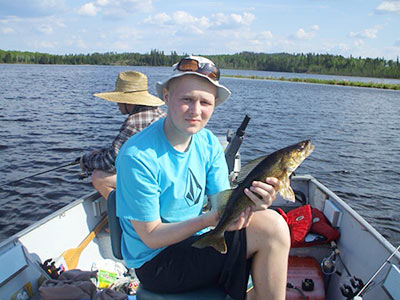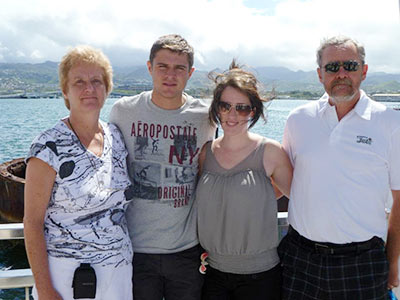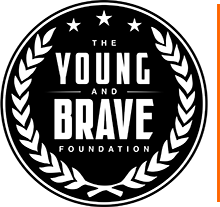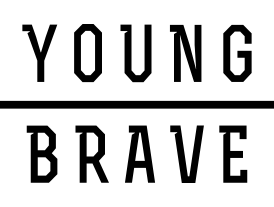Troy Woods
My name is Troy Woods. I am twenty-one years old and live in Manitoba, Canada. Four and a half years ago, I had just begun my Grade Twelve year. Finally, my class was ready graduate and I could move on to bigger and better things in life. At the time, I was an active and healthy teenager – a guy who was carefree and had never experienced any major hardship in his life. I was on our student council executive, captain of our high school hockey team and was just settling in to enjoy my final year of secondary school. What I didn’t know at the time was that my life was about to be drastically changed.
Something felt off. I felt tired, even after a full night of sleep. I started to shorten my shifts in hockey. A school field trip left me exhausted and I sat down at every opportunity. A trip to our local walk-in clinic would surely confirm what my parents expected: I must have mononucleosis.
 When the results of a routine blood test crossed the desk of my pediatrician, my parents were told to take me to the hospital. There, in the emergency ward of the Health Sciences Centre, Winnipeg, I was diagnosed with high risk, T-cell acute lymphoblastic leukemia, or A.L.L., a cancer of the blood cells, arising in my bone marrow. It is the most common form of childhood cancer, accounting for 30% of cancer cases and 80% of all leukemia diagnoses. My white blood cell count was ten times greater than normal and the emergency doctor told my dad that it would be necessary to ‘carpet-bomb’ me with a series of drugs to save my vital organs and my life. After two weeks of intense treatment and stabilization, I was discharged to then begin what would become a forty-month protocol to stay ahead of a cancer that is stunningly adept at recurrence.
When the results of a routine blood test crossed the desk of my pediatrician, my parents were told to take me to the hospital. There, in the emergency ward of the Health Sciences Centre, Winnipeg, I was diagnosed with high risk, T-cell acute lymphoblastic leukemia, or A.L.L., a cancer of the blood cells, arising in my bone marrow. It is the most common form of childhood cancer, accounting for 30% of cancer cases and 80% of all leukemia diagnoses. My white blood cell count was ten times greater than normal and the emergency doctor told my dad that it would be necessary to ‘carpet-bomb’ me with a series of drugs to save my vital organs and my life. After two weeks of intense treatment and stabilization, I was discharged to then begin what would become a forty-month protocol to stay ahead of a cancer that is stunningly adept at recurrence.
My three-year and four-month therapy plan has included 166 trips to CancerCare Manitoba from our rural home, 3 hospital admissions, 26 spinal taps, 10 blood transfusions, 10 treatments of whole brain radiation and endless blood work. Along with my fellow cancer patients, I have become a reluctant expert in all things leukaemia.
Fast-forward to March of 2013 and the day I completed treatment. My oncologist told me that, at that time, there was a statistical twenty percent chance that I would relapse. If I survived the first year, that chance would drop to five percent. In March of 2014, we quietly marked that milestone. In another year, it drops to two percent, the same as anyone else.

My family often considers how it is that I have survived a disease that was once uniformly fatal. How could anyone survive cancer of the blood? Blood goes everywhere in the body. Doctors watching leukemia cells under a microscope are astonished at the speed at which they duplicate, crowding out the healthy cells. And leukemia cells are brilliant at surviving chemotherapy, lying dormant and surviving to replicate. It would seem all but hopeless. Except, that researchers have been studying leukemia for almost seventy years. Through painstaking research, clinical trials, brave patients and financial support, an evidence-based plan has been devised to attack this disease on many fronts. Some drugs attack the leukemia cell directly while others surround and starve it. It is through research-based clinical trials that the rate of survival from an A.L.L. diagnosis is nearly 80%.
These discoveries are why the doctors knew exactly what to do with me when I showed up that night back in 2009. Research is what has allowed me to see my eighteenth birthday, Grade Twelve graduation, and next year, my university graduation with a degree in Commerce.
And I must mention the incredible support I received from family and community. It gave me courage to fight knowing that others were pulling for me. I believe that organizations such as “The Young & Brave Foundation” offer just such support.


